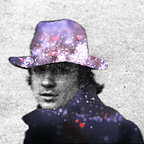Barbie Q
Barbie Q
Oil on Linen Plywood support
Early Period W x H (“) 32 x 36
The artist continues to find inspiration in subjects that appeal to human character such as the wedding and at the same time could disturb ideology of middle classes’ comfort by mocking its attachment to a cosmetized happiness in a painting called Barbie Q.
Wedding is a symbol for immediate personal gratification cultivated in any culture. Jaisini places on top of the painting’s composition where one would least expect it, naked spread up legs of full-bodied woman whose upper part is not visible cut by the painting’s edge. It seems quite inappropriate and provoking in a context of a wedding dinner party that takes place at the table below, covered with the white cloth. Showing the raw naked piece of body in explicit position the artist could have intended to criticize infantilism. In popular culture childishness is a voice of bourgeoisie. A voice of desire to live in a fairy tale without any growth of spirituality and the popular culture promises everything, a revolution of being childlike.
But the offer remains unrealized. In art Jaisini targets banality and shallow primitivism of escapists by embodied new angle to the everyday reality.
Simple body pleasures manifest the real existence of the self.
Each participant of Hot Dog Party and Barbie Q is only interested in his/her own enjoyment. All are tempted by the physical drives of lower mind.
They will never abandon the sense of world with ceaseless desire to enjoy thus they will never release the souls from the cycle of birth and death.
A common man inherits his fear of death. The body that can enjoy the fruits is mortal while spirit never quits. In Hot Dog Party evil phantoms accompany all jubilates. In Barbie Q a similar role is endowed to the Bull who is an object of worship in primitive cultures/religions for its strength and fertilizing power. Not by an accident Jaisini substitutes the image of the Phantom for the explicit hint of his concept as the bull’s image could direct criticism of human characters in art in various ways.
